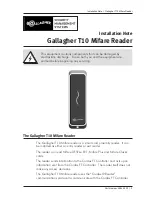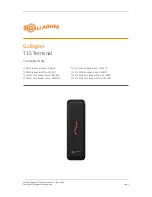
XRT86VL38
PRELIMINARY
xr
OCTAL T1/E1/J1 FRAMER/LIU COMBO
REV. P1.0.6
353
8.2.1
AIS (Alarm Indication Signal)
The XRT86VL38 adheres to the ITU-T G.775 specification for an all ones pattern. The alarm indication signal
is set to "1" if an all ones pattern (at least 99.9% ones density) is present for T, where T is 3ms to 75ms in T1
mode. AIS will clear when the ones density is not met within the same time period T. In E1 mode, the AIS is
set to "1" if the incoming signal has 2 or less zeros in a 512-bit window. AIS will clear when the incoming signal
has 3 or more zeros in the 512-bit window.
8.2.2
NLCD (Network Loop Code Detection)
The Network Loop Code Detection can be programmed to detect a Loop-Up, Loop-Down, or Automatic Loop
Code. If the network loop code detection is programmed for Loop-Up, the NLCD will be set "High" if a
repeating pattern of "00001" occurs for more than 5 seconds. If the network loop code detection is
programmed for Loop-Down, the NLCD will be set "High" if a repeating pattern of "001" occurs for more than 5
seconds. If the network loop code detection is programmed for automatic loop code, the LIU is configured to
detect a Loop-Up code. If a Loop-Up code is detected for more than 5 seconds, the XRT86VL38 will
automatically program the channel into a remote loopback mode. The LIU will remain in remote loopback even
if the Loop-Up code disappears. The channel will continue in remote loop back until a Loop-Down code is
detected for more than 5 seconds (or, if the automatic loop code is disabled) and then automatically return to
normal operation with no loop back. The process of the automatic loop code detection is shown in Figure 65.
F
IGURE
64. T
EST
C
ONFIGURATION
FOR
M
EASURING
R
ECEIVE
S
ENSITIVITY
Network
Analyzer
E1 = PRBS 2
15
- 1
T1 = PRBS 2
23
- 1
External Loopback
XRT86VL38
8-Channel
Framer/LIU
Cable Loss
Flat Loss
Tx
Tx
Rx
Rx
W&G ANT20
















































